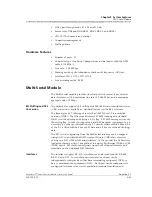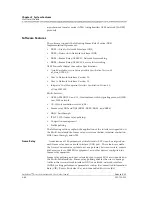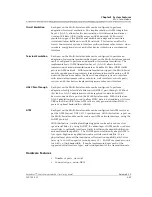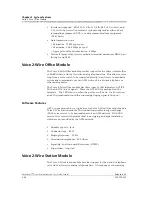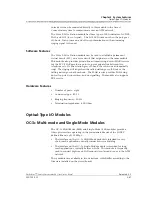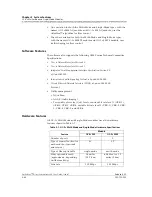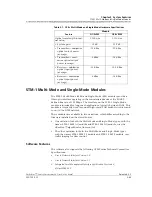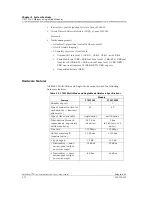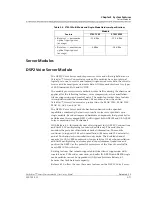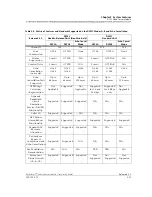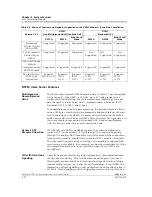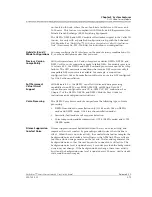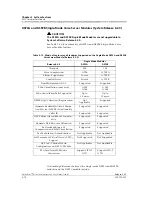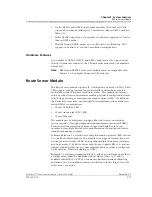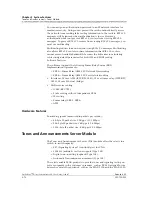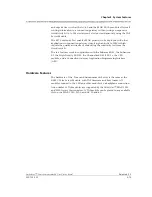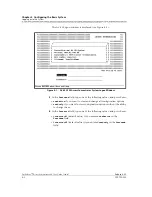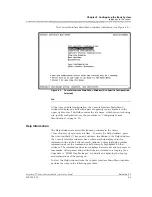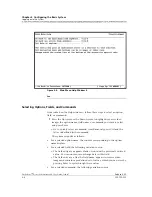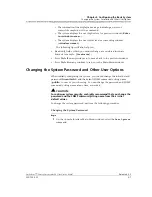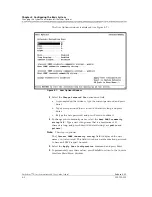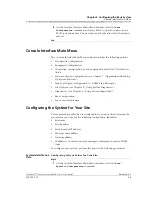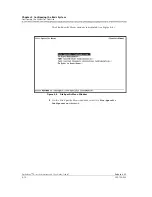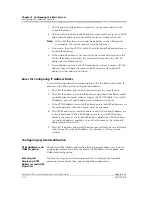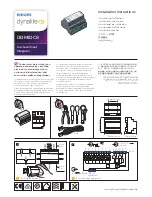
255-700-025
3-77
PacketStar
™
Access Concentrator 60 User Guide
, Issue 1
Release 6.3.0
Chapter 3 System Features
Route Server Module
•
On the DSP2A and DSP2B single-mode modules, the number of tails
supported in echo cancellation is 32 msec fewer than in DSP2C mode in
Table 3-10.
•
In the DSP2B single-mode, the number of channels supported is 32 fewer
than in DSP2C mode.
•
The DSP2A and DSP2B modes do not offer AAL-2 multiplexing, SPVC
support, or hybrid A, B or Echo Cancellation configurations.
Hardware Features
Any number of DSP2A, DSP2B, and DSP2C modules can be supported per
chassis. All modules connect to the CPU and other modules by a backplane
connection.
Note:
DSP2A and DSP2B Voice Server modules must be compatible with
Release 5.0.0 or higher Enhanced DS1 modules.
Route Server Module
The Route Server module supports IP virtual private networks (VPNs). Each
VPN supports routing information protocol (RIP) and can be assigned to
multiple IP network interfaces and static routes. The module can interact
with any other Access Concentrator module port that is configured for frame
relay, bridge, routing, or asynchronous transfer mode (ATM). All traffic on
the Route Server module runs through IP in compliance with media access
control (MAC) encapsulation:
•
IP over ATM (RFC 1483)
•
IP over frame relay (RFC 1490)
•
IP over Ethernet
The module can be configured through either the Access Concentrator
system console or through simple network management protocol (SNMP).
Each Access Concentrator system may support multiple Route Server
modules, but multiple Route Server modules cannot be configured for hot
standby redundancy purposes.
Software Release 6.3.0 introduces routing information protocol (RIP) Version
2 to the Route Server module. The module now supports Internet Protocol
virtual private networks (VPNs) by assigning multiple IP network interfaces
and static routes. (The Route Server module also supports RIP v1.0, and can
interact with any other Access Concentrator module port that is configured
for frame relay, Ethernet bridging, or ATM.)
Release 6.3.0 software, supporting RIP v2.0, allows you to divide networks to
a further extent than the traditional subnet classes (Class A, B, and C)
available with RIP v1.0. RIP v2.0 enables authentication and multicasting,
and allows you to run different masks on different subnets. Rip v2.0 can be
either active or passive.
Содержание PacketStar AC 60
Страница 38: ...Chapter 1 Getting Started 1 14 255 700 025 PacketStar Access Concentrator 60 User Guide Issue 1 Release 6 3 0 ...
Страница 128: ...Chapter 3 System Features 3 80 255 700 025 PacketStar Access Concentrator 60 User Guide Issue 1 Release 6 3 0 ...
Страница 404: ......
Страница 406: ......
Страница 408: ......
Страница 409: ......

